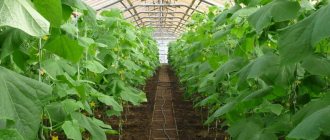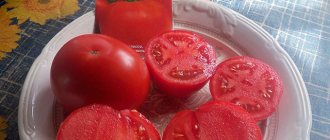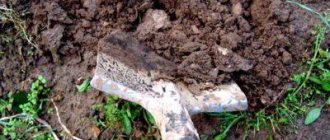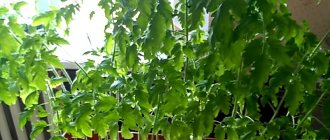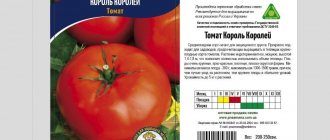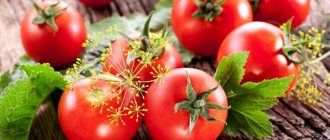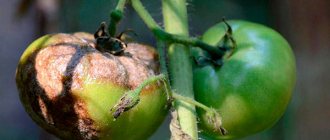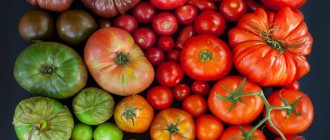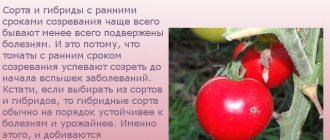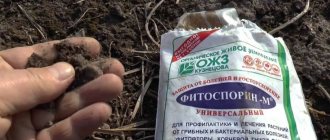When growing tomatoes, we often encounter various plant diseases that can significantly affect the future harvest.
It is important to identify the type of disease in time and immediately begin saving the plants.
Prevention will help prevent or facilitate the process of fighting the disease. The article talks about dealing with burns on leaves and stems.
What is it and what does it look like?
First, let's find out what types of burns there are and what they look like:
- chemical burn;
- sunburn.
With a chemical burn, most often with boric acid, white spots appear on leaves or fruits, or rather tissue necrosis. With sunburn, yellowing of the edges of the leaves is observed, followed by drying, curling and falling off.
- In the first case, this occurs due to excess concentration of the spraying composition and incorrect choice of weather conditions for this operation.
- Sunburn appears on seedlings that are not adapted to sunlight, as well as seedlings planted in open ground, unprotected from direct sunlight. These damages can also occur on fruits growing under the scorching sun. They look like yellow spots, which subsequently do not turn red and harden. On stems they appear as tissue necrosis.
The appearance of pests
Peppers, like other plants, can be attacked by pests that can destroy most of the crops and infect the crop with bacterial and fungal diseases. Plantings are destroyed by the following insects:
I also draw: for my son’s birthday, Tarzan painted his portrait
It’s good that I didn’t throw it away: I made an excellent rug for the bathroom out of old pants
Exercise has become a habit. How to force yourself to do exercises
- Melon aphid. The beetle infects all parts of the plant. It even appears on flowers. Sucks the juices out of the pepper. Subsequently, the leaves begin to curl, turn yellow and dry out. As a result, the plant dies.
- Colorado beetle. Mainly lives on eggplants and potatoes. But sometimes it settles on pepper. It is difficult not to notice, and if you do not fight, the beetle can destroy all crops.
- Slugs. They attack crops less often, but cause no less damage. They eat leaf blades and fruits. Due to the activity of the pest, the plant stops developing and in most cases becomes infected with diseases from it.
- Spider mite. The insect is practically invisible to the human eye, and the fact of infection becomes obvious after a web appears on the leaves. The mite sucks the sap from the plant and thereby destroys it.
Photos of seedlings and fruits
In the photo below you can see sun and chemical burns on tomato seedlings and adult plants.
Causes of Sun Damage
Plants get sunburn due to powerful ultraviolet irradiation , that is, prolonged exposure to the scorching sun. This occurs at temperatures of 40 degrees and above. Seedlings, plants planted in open ground, in a greenhouse and fruits can be burned.
As a rule, the lower leaves are more resistant to this effect, since they are in the shadow of the upper ones. If tomato bushes are subjected to severe pinching, the fruits do not have leaf protection and are therefore more susceptible to burns. It looks like whitish spots on tomatoes and withered edges on leaves.
Burnt leaves and fruits stop developing . The tomatoes become dense, lumpy and tasteless.
Places damaged by burns are a conductor of various diseases.
Signs of overheating tomatoes
For high-quality development and abundant fruiting, tomatoes need a daytime temperature of 20-25⁰C, and a night temperature of 16-18⁰C. If the temperature in the greenhouse rises above 30-35⁰C and stays at this level for over 4-5 hours, then the tomatoes begin to feel discomfort and the first signs of overheating appear.
- The leaf blades become pale, as if burned out in the sun.
- The buds, flowers, and ovaries begin to fall off.
- The growth of the tomato bush is slowing down.
If plants are exposed to elevated temperatures for a long time, burn spots appear on the leaves and they begin to curl. Fruits of fruiting tomatoes also suffer. Light spots, cracks, and sometimes rot appear on them. The pulp becomes coarse and unpalatable.
An increase in temperature in the greenhouse to 38-42⁰C causes the leaves to fall, the stem loses vital juices - the plant dies.
When tomatoes in a greenhouse experience overheating, they are forced to spend all their energy on breathing, as a result of which their development stops.
What to do if tomatoes are injured, how to resuscitate them?
Methods and means of resuscitating plants from burns will depend on the degree of damage. It is impossible to restore burnt leaves and fruits. We'll show you how to restore tomatoes after moderate damage.
After a chemical burn, water the leaves with clean, not cold water . The following activities carried out to restore plants include various feedings to increase green mass.
Inorganic:
- nitrogen;
- complex mineral fertilizers (nitroammophoska, ammonium sulfate and others).
Or one of the organic fertilizers:
- herbal nettle infusion;
- chicken droppings.
Burnt tomatoes need to be removed from the bush , as their affected areas will quickly become susceptible to other diseases. This will lead to crop loss.
What temperature is dangerous for tomatoes?
First, let’s figure out at what temperature seedlings freeze. Even light frosts of one to two degrees can cause serious damage to tomatoes. Cooling down to -6°C threatens the complete destruction of the plantings, and no measures will be able to revive the bushes.
In cold conditions, the heat-loving vegetable experiences stress, causing microscopic hairs on the stem and leaves to stand on end and become covered with tiny drops of moisture. Water forms a kind of protection on the greens, preventing the internal structure of the tomatoes from cooling for some time.
What to do if the housewife opened the seedlings in the morning and found signs of hypothermia in the tomatoes? Is there a chance to improve the situation?
Treatment for vegetables in a greenhouse
Plants can also get sunburn in a greenhouse, even if all agrotechnical rules are followed.
If only the leaves are burnt, then they can be removed, but not all at once, so as not to expose the plant to even greater stress. After this, the bushes will recover, although the harvest date will be slightly delayed. If the stems and roots are burnt, the seedlings need to be replaced. To prevent this from happening, the optimal temperature regime must be maintained in the greenhouse : +23ºС – 25ºС during the day and + 18ºС at night. To do this, arrange through ventilation on both sides, and also open all the windows, which will save the plants from overheating, and at the same time from late blight.
Sometimes in summer there are very hot days. In this case, ventilation does not give an effective result. Shading can help. On hot days, the greenhouse can be covered with spunbond, newspapers, mesh, but always white.
The greenhouse can be painted with a chalk solution (mix chalk with water) or a flour solution (flour with milk). The main thing is that this composition washes off well and is easy to remove at the end of the heat.
If, nevertheless, the bushes in the greenhouse are burnt, they need to be watered thoroughly that day. This is done in the morning or evening hours so that the water does not evaporate quickly and settle on the walls in the form of condensation. For the same purpose, airing is done for 1 hour.
Fertilizer
Few people know, but the cause of the problem may lie in improper or insufficient soil fertilization:
- lack of phosphorus is manifested by cracks when ripening in a circle, and the leaves become purple;
- copper deficiency, in addition to cracks in the fruit, is manifested by withered leaves and a small number of inflorescences;
- with calcium deficiency, the leaves turn yellow, and after a certain period of time the bush dries out;
- if deformed leaves are noticed, as if they were burned, then this indicates a lack of potassium;
- when the leaves begin to turn yellow and then fall off completely, the plant lacks magnesium.
How to prevent
To prevent the problem from arising and to prevent the appearance of tomatoes from deteriorating, you should fertilize the plants every 2 weeks by watering.
In this case, the liquid should be directed to the root system of the plant. Phosphorus fertilizers, ammonium nitrate, and potassium must be diluted in water in a ratio of 1 tablespoon per 10 liters of liquid.
Potassium supplement
When tomatoes begin their formation, there is no need to fertilize with phosphorus, but on the contrary, potassium nutrition needs to be increased.
If all the necessary agrotechnical requirements are systematically met, but cracks still appear on the tomatoes, then you need to analyze the mineral content of the soil.
Sometimes it is difficult, and sometimes impossible, to understand what exactly led to cracks in tomatoes - incorrect climate and humidity conditions, or an insufficient amount of useful elements.
If you are faced with this problem, take a closer look at your plants; if the leaves fall and change color, then perhaps the reason is in the fertilizer, and when the fruits grow too intensively and subsequently crack, this indicates an incorrect climate and humidity in the greenhouse.
Be sure to comply with all agrotechnical requirements, because each factor has a great influence on each other. By adhering to all the necessary rules, the harvest will be large, high-quality and healthy.
Prevention
For their garden plots, gardeners usually grow tomato seedlings themselves. Already at this time, you need to take care of hardening the plants from burns.
- It is necessary to gradually accustom the plants to the sun, expose them to open sunlight, starting from 1 hour and extending to 3 hours in the morning and evening. Then the time should be increased further and the process finally completed by bringing the plants into the house (transferred from the loggia) only at night.
- After planting in open ground or a greenhouse, you need to think about shading during the scorching sun.
A medium-density covering material may be suitable for these purposes. It is better to choose white, because... it allows some sunlight to pass through. But please note that if you completely cover the plants, the temperature under the covering material will be even higher than outside, so you should try to shade only the upper parts of the plants, which are more susceptible to burns on hot days. - Plants need to be watered only at the roots and in the evening.
- Spraying them with biostimulants will help increase the immunity of tomatoes.
- To protect fruits from burns, it is necessary to prevent overheating of the fruit, which occurs when there is insufficient foliage. In other words, if it’s a hot summer, then you shouldn’t rush to remove the extra stepsons.
Tomato diseases in hot summers - 5 most common tomato ailments
Tomato growers are true enthusiasts, bold experimenters and connoisseurs of delicious, homemade tomatoes. They are willing to spend hours studying seed catalogs and poring over seedlings, and then plant, care for, fertilize and care for the plants with sincere love. But, alas, there is still no uniform insurance against tomato diseases. Therefore, let's look at 5 tomato diseases that threaten in hot summers
There are several pathogenic microorganisms that can cause disease in tomato plants.
Advice from experienced gardeners
Such misfortunes as burns of leaves and fruits of tomatoes are not encountered by experienced gardeners. Thanks to their skills and knowledge, they carry out all the necessary protective procedures in a timely manner. Here are some of them:
- select varieties of tomatoes adapted to given weather conditions;
- do not water the plants during the daytime, as drops of water under the bright rays of the sun focus them like lenses;
- if the leaves of the tomatoes still get burned, then they need to be sprayed with Epin solution;
- cover the plantings with spunbond (covering material);
- Place a container with diluted mullein in the greenhouse; carbon dioxide vapor will accelerate the appearance of green mass after removing the burnt leaves;
- do not treat tomato bushes with boric acid in clear weather, as the water quickly evaporates and the concentration of the solution increases;
- It is best to dilute boric acid at a water temperature of +50 ºС, in this case there will be no undissolved suspension left and it will not burn the leaves;
- Do not increase the concentration of the solution under any circumstances, adhere to the recommended interval between treatments, and do not spray more than three times per season;
- protect the soil from overheating by mulching with agrofibre or other covering materials;
- provide shading of the area or greenhouse.
Growing tomatoes is an easy task that requires a little knowledge and diligence. So that your work is not overshadowed by a bad harvest, carefully re-read this article and you can get rid of one problem. Tomato burns greatly impair the appearance of the fruit and its taste, and leaf burns will significantly reduce your yield. Compliance with agricultural technology and strict adherence to instructions for medications will help to avoid this.
